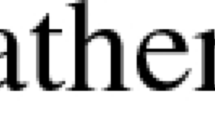Abstract
Philosophers have justified extant theories of singular thought in at least three ways: they have invoked wide-ranging theories motivated by data from other philosophical areas, they have elicited direct intuitions about which thoughts are singular, and they have subjected propositional attitude reports to tests such as Russellian substitution and Quinean exportation. In these ways, however, we haven’t yet been able to tell what it takes to have singular thoughts, nor have we been able to tell which of our thoughts they are. I propose, therefore, a methodological contribution, a new source of data about singular thought. We can tell whether a thought is singular if we ask what we can coherently deny at the same time at which we agree with the thought. When we agree with a thought that is general, we cannot coherently deny about the thought’s subject a certain description, the one that occurs in the thought’s subject position. To show how to use this new data source, I develop a linguistic method for testing whether a speaker expresses a singular or a general thought.
Similar content being viewed by others
Notes
Note, though, that Sosa does not himself regard this as a reason for scepticism.
On a historical note, Keith Donnellan has discussed dialogues involving coherent disagreement similar to our coherent agreement (1978:54–55; see also Kripke 1977:270). Donnellan, however, was not using his dialogues to diagnose singular thought; rather, he was examining cases where everyone agrees that the thought is singular, and he was arguing that in these cases speaker reference determines semantic reference.
Notice that here we are not using our test to tell whether Sherlock expresses a singular thought. Rather, we are testing the test itself. It seems safe to assume that we already know which thoughts are singular in easy cases such as Smith’s murderer. If so, then we can use these easy cases to fine-tune the test so we can tell what is going on in harder cases such as Jeshion’s Bearprint or Dessert Sensations (2010:117).
This is not intended to be medically realistic.
References
Beaver, D.I., & Geurts, B. (2011). Presupposition. In The Stanford Encyclopedia of Philosophy (Summer 2011 Edition).
Donnellan, K.S. (1966). Reference and definite descriptions. The Philosophical Review, 75(3), 281–304.
Donnellan, K.S. (1968). Putting Humpty Dumpty together again. The Philosophical Review, 77(2), 203–215.
Donnellan, K.S. (1978). Speaker reference, descriptions and anaphora. Syntax and Semantics, 9, 47–68.
Donnellan, K.S. (1977). The contingent a priori and rigid designators. Midwest Studies in Philosophy, 2, 12–27.
Grice, H.P. (1968). Utterer’s meaning, sentence-meaning, and word-meaning. Foundations of Language, 4(3), 225–242.
Jeshion, R. (2009). The significance of names. Mind and Language, 24(4), 370–403.
Jeshion, R. (2010). Singular thought: acquaintance, semantic instrumentalism, and cognitivism. In R. Jeshion (Ed.), New essays on singular thought (pp. 105–141). Oxford: Oxford University Press.
Kaplan, D. (1989). Demonstratives: an essay on the semantics, logic, metaphysics, and epistemology of demonstratives and other indexicals. In J. Almog, J. Perry, H. Wettstein (Eds.), Themes from Kaplan (pp. 481–564). New York: Oxford University Press.
King, J.C. (1999). Are complex ‘That’ phrases devices of direct reference? Noûs, 33, 155–182.
Kripke, S. (1977). Speaker’s reference and semantic reference. Midwest Studies in Philosophy, 2, 255–276.
Kripke, S. (1980). Naming and Necessity. Cambridge, MA: Harvard University Press.
Quine, W.V. (1956). Quantifiers and propositional attitudes. Journal of Philosophy, 53, 177–187.
Russell, B. (1905). On Denoting. Mind, 14, 479–493.
Russell, B. (1910). Knowledge by acquaintance and knowledge by description. Proceedings of the Aristotelian Society, 11, 108–128.
Salmon, N. (2004). The good, the bad, and the ugly. In M. Reimer, & A. Bezuidenhout (Eds.), Descriptions and beyond (pp. 230–260). Oxford: Oxford University Press.
Sosa, E. (1970). Propositional attitudes de dicto and de re. Journal of Philosophy, 67(21), 883–896.
Acknowledgments
This paper has benefited from extensive comments by Thomas McKay, Kevan Edwards, and Arthur Sullivan. Furthermore, I would like to thank Mark Brown, Katalin Farkas, Kris McDaniel, Byron Simmons, the anonymous referees, and audiences at Central APA, Syracuse University, and ECAP7.
Author information
Authors and Affiliations
Corresponding author
Rights and permissions
About this article
Cite this article
Capraru, M.D.I. A New Source of Data About Singular Thought. Philosophia 41, 1159–1172 (2013). https://doi.org/10.1007/s11406-013-9456-z
Received:
Revised:
Accepted:
Published:
Issue Date:
DOI: https://doi.org/10.1007/s11406-013-9456-z



